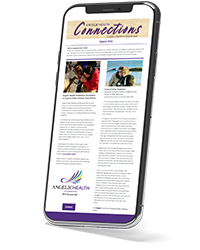Oxygen use
People who have diseases affecting the lungs or heart disease are especially likely to have shortness of breath. One of the simplest things one can do to help relieve shortness of breath is to help the patient to sit up. A 30- or 45-degree angle of elevation is best.
Use pillows to support neck and head if needed.
The use of concentrated oxygen will help patients with their difficulty breathing.
Oxygen is given by nasal cannula or a mask. When using the cannula be sure that the plastic tubing reaches to the nostrils. It does not need to be inserted far. Be sure the mask covers the mouth and nose. Once the mask or cannula is put on the patient a plastic tube is attached to a source of oxygen. These can be oxygen tanks of various sorts or oxygen concentrators. Adjust the oxygen levels to what is instructed by your nurse.
You must take extra care to stay safe when using oxygen
Have working smoke detectors and fire extinguishers in your home.
- No smoking in a room where oxygen in in use. Put "NO SMOKING" signs throughout your home.
- Keep at least 6 feet away from any source of fire, such as a stove, fireplace, or tabletop candle.
- Keep oxygen 6 feet away from:
- Electric baseboard or space heaters
- Wood stoves, fireplaces, candles
- Electric blankets
- Anything with electric motors such as hairdryers, electric razors, and electric toothbrushes.
- Keep oxygen away from the stove top and oven.
- Watch out for splattering grease. It can catch fire.
- Cooking with a microwave is OK.
- DO NOT store your oxygen in a trunk, box, or small closet. Storing your oxygen under the bed is OK if air can move freely under the bed.
- Keep liquids that may catch fire away from your oxygen. This includes cleaning products that contain oil, grease, alcohol, or other liquids that can burn.
- DO NOT use Vaseline or other petroleum-based creams and lotions on your face or upper part of your body unless you talk to your respiratory therapist or doctor first. Products that are safe include:
- Aloe Vera
- Water-based products, such as K-Y Jelly
- Avoid tripping over oxygen tubing.
- Try taping the tubing to the back of the patient’s shirt will keep tubing from getting tangled.
These videos are produced by Angelic Health solely for educational purposes. The information included is not a substitute for professional medical advice. All content including, text, graphics, images and communication is for general information purposes only and is not all - encompassing. Discuss your questions and concerns with your Case Manager or call Angelic Health at 609-822-7979 anytime.

